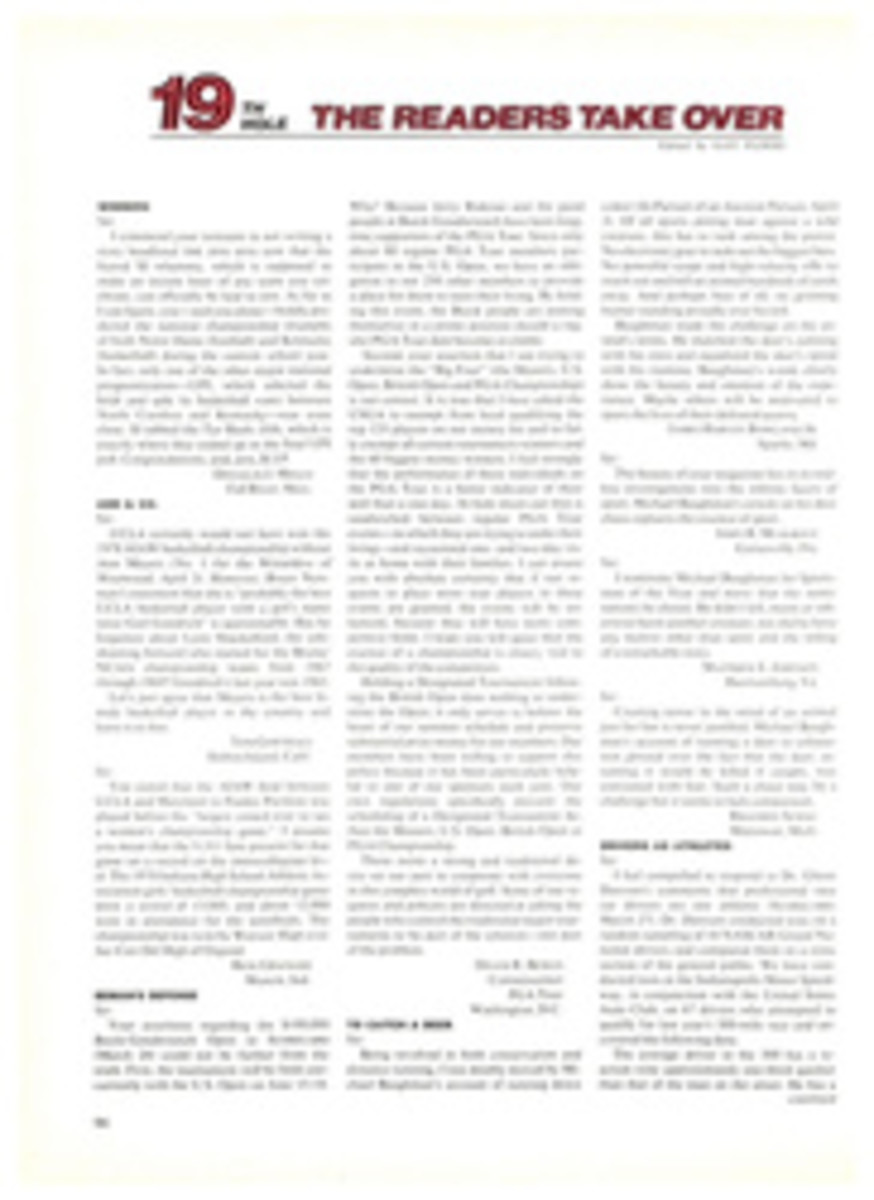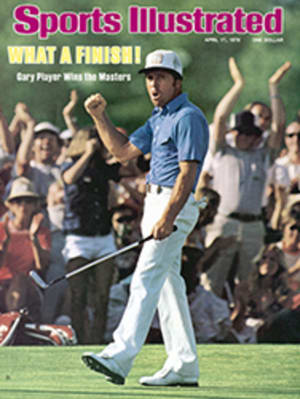
SHADOWERS, SNIPERS AND SUPERPESTS
As one might expect in so fluid and freewheeling a sport, hockey has its share of versatile performers: Guy Lafleur, Bryan Trottier, Darryl Sittler, Brad Park, Bobby Clarke. What such players have in common is this: they were born to skate, shoot, pass and check. They could no more excel in just one aspect of the game than Ben Franklin could have been just a printer.
However, these do-it-all players will not necessarily determine who wins the Stanley Cup. Hockey is also a game of specialists, and they have a say in things, too. Though not as variously talented, the specialists compensate with hard work and singlemindedness. The tasks they perform, while often unglamorous, can be crucial. Killing penalties, for instance. And harassing rival goalies. And, oh, yes, trying to stop the Lafleurs, the Trottiers, the Sittlers, the Parks and the Clarkes.
Specialists, for the most part, play "roles." It was a role, for example, that the New York Rangers' Gene Carr played in the 1972 quarterfinals against Montreal. A rookie at the time, Carr was assigned to hound the Canadiens' speedy Yvan Cournoyer, and he shadowed Cournoyer so successfully—limiting him to only two goals—that the Rangers upset Montreal in six games. It was a lot of role-playing—doing unspectacular things like mucking in the corners and winning face-offs—that won the '74 and '75 Stanley Cups for the Philadelphia Flyers. Indeed, it might be argued that the Broad Street Bullies were nothing more than a team of specialists. And nothing less, either.
Few appreciate how heavily Montreal relied on specialists in winning the cup the past two years. The reason for this oversight is that Montreal has so many stars, including Lafleur, Steve Shutt, who had a 49-goal year, and a crack defensive corps headed by Larry Robinson, Serge Savard and Guy Lapointe. But Les Canadiens are loaded with specialists, too. During Montreal's four-game sweep of Boston in last year's finals, the splendid penalty-killing job the Canadiens received from the likes of Jacques Lemaire, Bob Gainey, Doug Jarvis and Rejean Houle was generally overlooked. Montreal's penalty killers allowed but two goals in 21 shorthanded situations, effectively taking the growl out of the Bruins.
The importance of specialists to Montreal is emphasized by Coach Scotty Bowman, whose team opens quarterfinal action next week as an overwhelming favorite to win its third straight cup. Bowman feels that specialists—whom he sometimes calls "self-made men" to distinguish them from the immensely talented stars—could make the difference in the playoffs. "It's sometimes easier to curtail the great scorers over a short series than it is over a long season," Bowman says. "If you expect to win, the self-made players have to come through."
Which specialists are most likely to come through in the playoffs? While every team has them, some are plainly better than others. Here are the best, a kind of Who's Who of the lunchpail brigade.
THE SHADOW: MONTREAL'S BOB GAINEY—Almost everybody laughed when Gainey, a non-scorer in his junior career, was drafted in the first round in 1973, but he turned out to be the outstanding defensive specialist the Montreal brass knew he would be. A strong skater blessed with Havlicekian stamina, Gainey is adept at neutralizing rival stars. He picks up his man early, bumps him repeatedly and keeps him off balance. But that's not all. Gainey usually plays with Doug Jarvis and Rick Chartraw on Montreal's "checking line," the unit Bowman puts out against the other team's best scorers. The Montreal checkers enjoy nothing better than scoring a couple of goals themselves against the elitists. "We think offensively," says Gainey, who scored 15 goals this season. "We want the puck. If we get a goal against the other team's big line, we have a psychological edge." Because he is a left wing, Gainey has played against the NHL's hottest right wings—the Mike Bossys, Rene Roberts, Danny Gares and Lanny McDonalds. The only high-scoring right wing who has escaped Gainey's attention is teammate Lafleur. Lucky Lafleur.
THE SUPERPEST: PHILADELPHIA'S GARY DORNHOEFER—One of the players who helped put brawn in the Bullies, Dornhoefer has made a career of unnerving the other team's goalie. Braving physical retaliation by rival defensemen and sizzling shots by his own teammates, Dornhoefer plants his 6'1", 195-pound self in the goal mouth and uses stick, elbows and shoulders to stay there. This enables him to frazzle the goaltender, screen teammates' shots and even score himself on deflections and rebounds. It also brings him grief. This season alone he has had two battered knees, a hip pointer, and a thigh injury inflicted by Flyer Defenseman Bob Dailey's wicked slap-shot. Allowing that "I've slowed down and they've been nailing me," the 35-year-old Dornhoefer says he will retire to the golf course after the playoffs. Meanwhile, he is teaching everything he knows about trespassing to 22-year-old Paul Holmgren, a tempestuous and, unlike Dornhoefer, helmeted bruiser who likes to park in the crease, too.
THE POWER BROKERS: THE NEW YORK ISLANDERS' STEFAN PERSSON AND MIKE BOSSY—A team's biggest guns are generally deployed on the power play, the attack used to exploit penalty-created manpower advantages, and the Islanders have a couple of cannons, Bryan Trottier and Denis Potvin, on theirs. But it is Persson and Bossy, both rookies, who transformed the Islander power play from the NHL's worst early this season to one of the best. Credit the poise and patience of Swedish import Persson. Schooled in the European tradition that "if you move the puck around a bit, you'll have a better chance," Persson waits for the perfect opening, then threads the puck through it. The favored recipient of his pinpoint passing is Bossy, a sniper with a quick release on his wondrously accurate shot. The secret of Bossy's marksmanship is in the hands. They are surgeon's hands, finely made but strong and slightly broad at the fingertips. Persson wound up with 50 assists, while Bossy's 53 goals were a club record and the most ever by an NHL rookie. Twenty-five of his goals came on the power play—tops in the NHL.
TOP COP: TORONTO'S DAVE (TIGER) WILLIAMS—For all the outcries against fighting in hockey, the tough guys go on trying to "win a reputation," as they put it. And as long as the refs allow it, they derive certain tactical benefits. Williams, Dave (Hammer) Schultz' successor as Public Enemy No. 1, played much of the season on a line with Darryl Sittler and Lanny McDonald, the Maple Leafs' top goal scorers, and his comforting presence freed them to concentrate on putting the puck in the net. At other moments Williams has succeeded in taking key opponents into the penalty box with him. To hear Williams tell it, however, the fact that he amassed 351 penalty minutes is a case of virtue triumphant. "Some teams, Boston, for instance, try to use me to set the trend of the game," Williams says cockily. "They feel if they can take me it might be demoralizing to the rest of the guys. The Bruins' [Terry] O'Reilly or [John] Wensink can usually be counted on to try me, but they must be getting pretty tired of it by now. I know I'm getting tired of beating them up."
THE KILLERS: BUFFALO'S DON LUCE AND CRAIG RAMSAY—For six years Luce and Ramsay have teamed to kill penalties, simultaneously battling the clock and the manpower disadvantage to keep power-play specialists like Persson and Bossy from scoring. The small, pesky Ramsay relies on quickness; the rangy Luce employs his long reach and the NHL's heaviest stick, which he is forever rapping against some unfortunate's ankles. Ramsay and Luce know each other so well that when Ramsay darts here, Luce automatically glides there. "We try to make them start over or force a long pass that can be intercepted," says Ramsay. If they do intercept the puck, watch out. Luce has twice scored eight shorthanded goals in a season; Ramsay led the league this year with five.
THE QUICK-DRAW KID: MONTREAL'S DOUG JARVIS—"From the time I plant my skates, I watch the puck," says Jarvis, discussing his technique on face-offs. "I can't ever remember actually seeing it hit the ice. A face-off is seldom won cleanly. Usually the puck just lies there dead for a split second. That's what you have to react to—getting the second chance." Cleanly or not, Jarvis, whom Bowman calls on to take anything resembling an "important" face-off, wins more than his share of the 20-plus he has in a game. Unlike Boston's center, Gregg Sheppard, who tries to unnerve face-off rivals with chatter ("Haven't scored a goal in a while, have you?"), Jarvis remains silent, a model of concentration and anticipation. The puck drops, the sticks clash and, voilà, Montreal wins another face-off.
CHAIRMAN OF THE BOARDS: BOSTON'S TERRY O'REILLY—In guiding his club to the NHL's second-best record, Bruin Coach Don Cherry ran what he gleefully called "a sweatshop." Nobody sweated more than Joseph James Terence O'Reilly. Never one for fancy moves, O'Reilly barreled his way to a career-high 29 goals. But, as always, the 6'1", 200-pound winger played his best hockey in the corners, banging, digging and otherwise making his presence felt. He has a special knack for kicking the puck loose, a talent he attributes to his experience as a high school soccer player in Ontario. O'Reilly often handles two opponents on the boards at once, which, as he notes, "leaves a teammate open for a pass." This season he got off quite a few such passes, leading to goals for the Bruins—and assists for himself. Thus, the rugged O'Reilly achieved an improbable double, setting a club record for penalty minutes (211) while also leading the Bruins in points (90). Bobby Orr, for one, thinks O'Reilly should be the league's MVP this season.
Surprise! Montreal won only two of the seven categories. Still, there is little cause for jubilation among the opposition. The Canadiens have Gainey and Jarvis and they also come frighteningly close to the best in every other specialty. Montreal's Yvon Lambert does a pretty fair imitation of Dornhoefer in the crease, and Lambert, Doug Risebrough, Mario Tremblay and Gainey will go into the corners with anybody. And when fists fly, the Canadiens can count on all sorts of bruisers, including 6'7" Gilles Lupien, a rookie defenseman known in the minors as The Towering Inferno. The Canadiens, in other words, have stars and specialists. Name your weapon, and they will slay you with it.
Which brings up the question of whether anybody can hope to beat them. Montreal had a routinely spectacular regular-season record of 59-10-11 but lost three of five games to Buffalo, the only team that can skate with the Canadiens. The Sabres found a sneaky way of foiling at least one of the Canadiens' specialists. That was Gainey, who generally kept busy against Buffalo, watching either Danny Gare or Rene Robert, the Sabres' top right wings. While that was happening, another Buffalo right wing, Gary McAdam, was scoring a total of four goals and assisting on two others against Montreal—including the winning goal in two of the Sabres' victories. Perhaps because his accomplishments occurred over the space of three months, the Canadiens never quite seemed to get the message that it was McAdam—not Robert or Gare—who had the hot hand.
Gainey implies things will be different in the playoffs. "You don't see teams often enough in the regular season," he acknowledges. "During the playoffs you study them and get scouting reports. You could be against the same team seven times in 10 days. They get to know you and you get to know them. That's when it gets interesting."
ILLUSTRATION
The Canadiens' Bob Gainey hounds his rival no matter where he goes.
ILLUSTRATION
The Flyers' Dornhoefer calls the crease home.
ILLUSTRATION
The Islanders' Bossy is a power-play marksman.
ILLUSTRATION
Boston's O'Reilly has vigorous board meetings.

